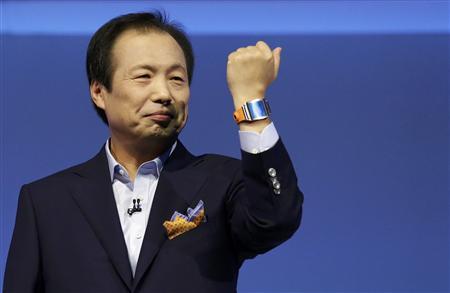(Reuters) – Samsung Electronics Co Ltd and Qualcomm Inc unveiled smartwatches on Wednesday, tapping a potential “wearables” market worth an estimated $50 billion as the high-end mobile phone market becomes saturated.

The companies launched the devices at nearly simultaneous events in Berlin and San Diego, and some analysts immediately questioned whether the devices were too costly, with expected prices near $300.
Samsung’s Galaxy Gear smartwatch works as an accessory to its market-leading Galaxy smartphone, with a small screen offering basic functions such as photos, hands-free calls and instant messaging.
Qualcomm’s “Toq” smartwatch can play music and handle phone calls and messages. It will be the first smartwatch with a touch-enabled “Mirasol” color screen that can be viewed easily in bright sunlight.
The launch by Qualcomm, which dominates the global market for applications processors for smartphones and tablets, is seen not so much as a hot seller but as a “reference” design or device to show off the Mirasol screens, in hopes the display technology will be more widely adopted as wearables of all types take off.
Samsung, which is the world’s top handset maker, hopes the Galaxy Gear will boost the appeal of its range of Android-powered smartphones, as it battles to maintain supremacy against arch rival Apple Inc.
Its launch, timed to coincide with the start of the IFA consumer electronics trade show in Berlin, also signals that the South Korean giant is more than just a fast follower in innovation behind Apple, which is preparing to release a new iPhone next week but has yet to go public with any wearable devices.
“I believe it will become a new fashion icon in the world,” J.K. Shin, Samsung’s co-chief executive and head of mobile business, said at its “Unpacked 2013 Episode 2” event.
The market potential for wearable devices is significant. Leveraging advances in voice technology, biometrics, communications, cloud storage and power consumption, smartwatches and other wearable devices could be a $50 billion market by 2017, according to Credit Suisse.
Apple Inc and Google Inc are also widely believed to be working on “wearables” such as wrist-worn devices, in what analysts expect to be the next phase of the mobile communications boom. The exploration of such wearable-computing devices has accelerated in recent years as smartphone growth tapers off.
Samsung’s smartwatch features a 1.63-inch (4.14-cm) screen as well as a basic camera, and will connect to Samsung’s latest Galaxy Note 3 smartphone via wireless Bluetooth technology. It will make calls, display messages, record videos and snap photos, all while the user’s phone stays in their pocket or handbag.
Clunky, earlier versions of Samsung’s smartwatch in 1999 and 2009 didn’t go down well with consumers. But the success of the company’s latest release will be measured as much in how it affects sales of high-end Galaxy smartphones as in sales of the device itself.
“We had smartwatch-type products before, but they were mainly for making phone calls. What’s different with the Gear is it’s got far more useful functions. It’s usability has increased significantly and design is not bulky,” Shin said.
NOT REVOLUTIONARY
The Gear will go on sale later this month for $299 while Qualcomm’s Toq will begin selling in the fourth quarter. Qualcomm did not specify a price. Tech blog Cnet reported it will sell for $300.
“The real question is, will this app enhancement make the purchase of yet another smart device worth it?” said Brian Proffitt, author of several books on mobile technology and an adjunct instructor of management in the University of Notre Dame.
“It’s great to have hands-free capabilities to take notes or snap a picture, but is it $299 great? That’s going to be the real test for the Galaxy Gear.”
FASHION ITEM
Both devices don’t have a flexible or curved display that some industry watchers had hoped to see on Samsung’s newest products.
The Gear’s OLED touch screen features half the picture quality of high-end smartphone displays and the camera nestling in the strap has only 1.9 megapixels – compared with a 13-megapixel rear camera on the Galaxy S4.
“People are really ready for flexible. As the smartphone market matures, brands are looking for something to break through new technology that will bring new opportunities to the market,” said Sweta Dash, director Display Research and Strategy at IHS Electronics and Media.
“But the technology is not ready for the mass market because it is too expensive.”
Samsung’s smartwatch will not be a game changer, CCS Insight analyst Ben Wood predicts.
“Samsung will do a great job in raising the profile of this new category, but I don’t think we will see a massive shift.”
“I think it will only really come alive if Apple would push into it real hard, because they would then make it a fashionable item. Because a watch is a fashion item. It really is.”
(Writing by Harro ten Wolde; additional reporting by Noel Randewich in SAN DIEGO; Editing by Ken Wills)





